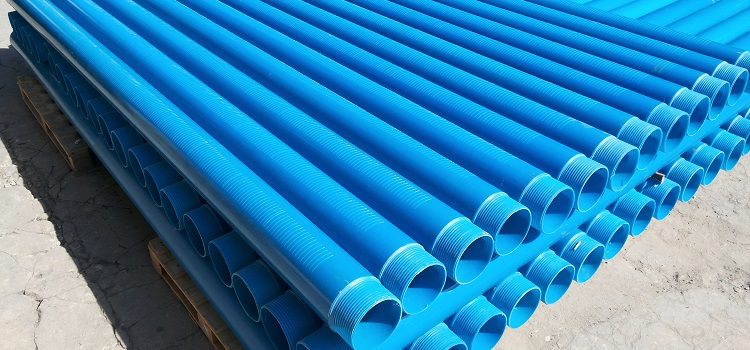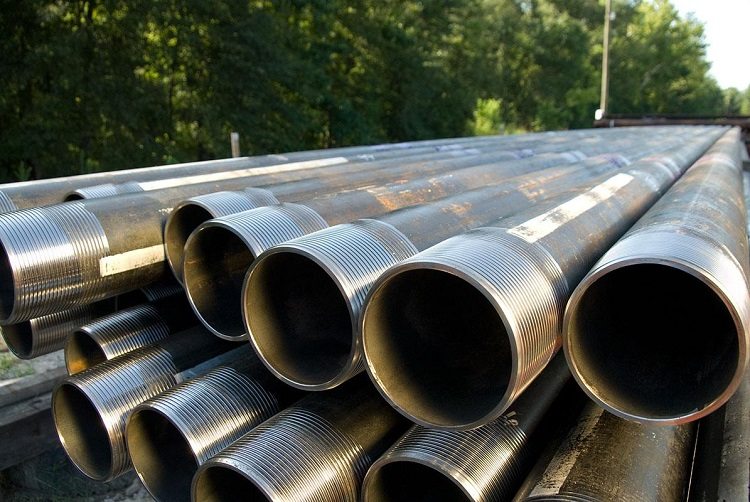What is meant by the term "casing" is not known to all of our contemporaries. In addition to specialists in well drilling, only the owners of those country houses that cannot be connected to the central water supply system may be familiar with him. Accordingly, the knowledge of what is a casing pipe will not hinder the townspeople who plan to build a cottage on the acquired land in the near future.
Casing Appointment
The casing is installed in a pre-drilled well, where it plays the role of the so-called casing, which allows you to keep the walls of the well or well unchanged. But this is not the end of the matter. We can say that the casing is a type of rolled pipe that not only prevents the walls from shedding, but also accumulates water due to the installation of pumping equipment in its cavity. The conformity of the characteristics of this product to the requirements of regulatory documents determines its many properties from the point of view of the end user, from the pressure and quality of the supplied water, including the ease of self-assembly, and ending with the shelf life of the well.
Whatever pipes are used to realize the casing (meaning the material of their manufacture), it is designed to solve two main problems:
- ensuring the stay of the walls of the drilled channel in a holistic state. Therefore, casing pipes for wells, so that they can withstand any movement of the soil, high strength must be inherent. Based on this, the selection of these products based on the criterion of "material of manufacture" must be approached very seriously. Especially if you want to organize the supply of drinking water with your own hands. Only then will the well last a very long time;
- The second main task is to ensure the tightness of the structure. Its solution is relevant for soils with a large number of aquifers, which are not recommended for drinking purposes.
The question naturally arises: which pipe is the best for a well under water in this case? We listen to the opinion of experts. Their answer is unequivocal: preference should be given to casing for threaded wells. After all, water intake should be carried out only from an aquifer suitable for its chemical and physical characteristics. And it is products equipped with carvings that successfully prevent the penetration of water from other horizons and tops into wells.
Types of casing for a well
We already know that casing pipes are products that perform the function of reinforcing material, and the operation of the entire system will depend on their quality.
Helpful information! In addition to raw materials, an important role in ensuring the reliable functioning of the water intake is played by the choice of the correct diameter of the casing pipe for the wells. It can vary over a wide range of values.
Today, you can use different types of pipes for casing channels with your own hands. The most widespread were metal, plastic, as well as asbestos-cement products.The answer to the question of which casing for a well is best to use depends on the expected operating conditions (first of all, the tendency of the soil to move) and the volume of planned water intake. The range of these products is regulated by the requirements of GOST 632-80. You can find out which pipes for a well to strengthen its walls, including with your own hands, by reading the information below.
Metal pipes. These casing pipes are best used for artesian wells and for limestone and sand structures in general. These products are resistant to any mechanical stress and have good durability.
The diameter of the steel casing ranges from 114≤D≤508 mm. With a wall thickness of 5-6 mm, they will last at least 50 years. Another plus is the threading of steel pipes. If you are looking for the answer to the question of which pipe is the best for the well used to organize a constant uninterrupted water supply, the following factor speaks in favor of choosing a steel casing. As you know, any drilled trunk can be silted up. And the restoration of its performance through the use of a drilling tool is possible only with steel casing. With products from another material, this is not available.
However, black steel has serious flaws. First of all, it is corrosion, which causes the appearance of rust in the water. However, this problem is an easily fixed difficulty that can be solved by using modern filters. Against this background, another drawback of the metal casing for the well looks much more significant: the high cost of this product in a thick-walled design. Therefore, it is recommended to use a steel casing for arranging deep wells with a large operational resource. Drilling a shallow well on sand from an economic point of view is better using cheaper material.
Plastic pipes. Market analysts have noted the increased popularity of plastic pipes for the well. Water wells reinforced with these products:
- have a long operational resource;
- chemically neutral;
- unlike highways equipped with iron casing pipes for wells, they are not subject to corrosion;
- do not require significant material costs for the arrangement. Moreover, regardless of which pipe is used - from HDPE, PVC or from polypropylene.
- ease of DIY installation.
Plastic pipes have a low specific gravity, and for convenience of connection, as a rule, are equipped with a thread. A complete picture of the standard sizes of casing pipe PVC rolling is presented in table No. 1. After studying it, you will find out what diameters are most often used to implement plastic casing.
Table 1
| Nominal diameter, millimeters | Pipe length millimeters | Outside diameter, millimeters | |
| Bell | Pipes. | ||
| 200
|
3090 | 247 | 225
|
| 3090 | 241 | ||
| 175
|
3080 | 211 | 195
|
| 3080 | 205 | ||
| 150
|
3070 | 180 | 165
|
| 3070 | 176 | ||
|
125
|
5070 | 152 |
140
|
| 3070 | 152 | ||
| 5070 | 149 | ||
| 3070 | 149 | ||
| 2070 | 149 | ||
|
115
|
3070 | 137 |
125
|
| 5070 | 134 | ||
| 3070 | 134 | ||
| 5070 | 132 | ||
| 3070 | 132 | ||
| 2070 | 132 | ||
|
100 |
5070 | 132 |
113 |
| 3070 | 132 | ||
| 5070 | 125 | ||
| 3070 | 125 | ||
| 80
|
6000 | 101 | 90
|
| 3060 | 95 | ||
Note! The main scope of polymer casing pipes are sand wells with a depth of not more than 50-60 meters.
Among other things, this is, in fact, the best building material for creating filter columns.
Among the disadvantages of plastic casing, it is worth highlighting poor resistance to mechanical stress. Re-drilling a well of this type is very problematic, and sometimes simply impossible.
Asbestos-cement pipes. The main advantages of these products include:
- resistance to chemically aggressive environments;
- high anticorrosive properties;
- relatively low price.
The main disadvantage is the increased fragility, which is why in this case one cannot do without increasing the wall thickness.It would seem that it’s okay, because the cost of an asbestos-cement pipe is low, so the wall thickness can be increased. However, it should be remembered that such a casing pipe for a well will have to drill a trunk of a larger diameter. And this will further increase the cost of installation.
In addition, the construction of filter columns based on asbestos-cement pipes is not permitted. This casing is best used for artesian wells on limestone with a depth of up to 100 meters.
DIY casing drilling
It should be noted that you can do this work yourself without calling a team of specialists when the aquifer is located at a depth of 15 meters.
But even if this condition is met, at least without one assistant you will not do. And before you get started, you need to get these accessories and tools:
- hammer, sledgehammer and wrenches;
- the gate. With its help, pipes are rotated in the ground;
- tripod. Its use facilitates the drilling process;
- drill, having the appearance of a choke. For screwing to the pipe, it is equipped with a thread.
Do-it-yourself drilling is performed by rotating a drill with a pipe in the ground. Periodically pull it to the surface and remove soil from the glass. After drilling about 2 meters, so that the walls do not collapse and fill the well, insert a casing into the channel. As you move down, you need to connect the pipes of the drilling rig with the elements of the casing.
Having reached a level with sufficient water, secure the casing to the surface. After that, insert a plastic pipe into the channel and connect the pump to it.
In general, the procedure for creating do-it-yourself wells with drinking water is not a difficult one. But to complete this painstaking work, it will take several days.
In conclusion, it should be noted that a wide range of such products can lead to the purchase of casing pipe unsuitable for the intended operating conditions. And this in any case will reduce the operational life of the well. Therefore, it is not recommended to independently choose the casing material. Only a specialist can do this correctly, taking into account the structure of the soil on the drilling site and its features.










